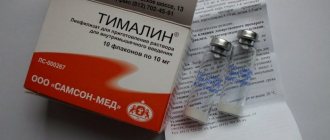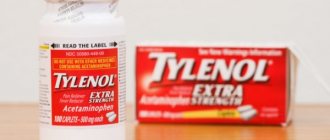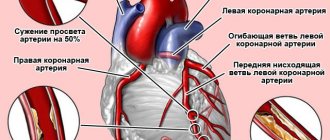Write a review
Reviews: 0
Manufacturers: Gedeon Richter (Hungary)
Active ingredients
- Metronidazole
Disease class
- Meningitis, unspecified
- Intracranial and intravertebral abscess and granuloma
- Acute and subacute infective endocarditis
- Pneumonia without specifying the pathogen
- Abscess of the lung and mediastinum
- Pyothorax
- Stomach ulcer
- Duodenal ulcer
- Gastritis and duodenitis
- Peritonitis
- Local infection of skin and subcutaneous tissue, unspecified
- Liver abscess
- Pyogenic arthritis, unspecified
- Osteomyelitis, unspecified
- Amoebiasis
- Acute amoebic dysentery
- Balantidiasis
- Giardiasis (giardiasis)
- Septicemia, unspecified
- Trichomoniasis
- Urogenital trichomoniasis
- Cutaneous leishmaniasis
- Surgical practice
- Urethritis and urethral syndrome
- Inflammatory disease of the uterus, other than the cervix
- Other specified inflammatory diseases of the female pelvic organs
- Vaginitis, vulvitis and vulvovaginitis in infectious and parasitic diseases classified elsewhere
Clinical and pharmacological group
- Not indicated. See instructions
Pharmacological action
- Antiprotozoal
- Antibacterial
Pharmacological group
- Other synthetic antibacterial agents
Release form and composition
The drug is available in the following dosage forms:
- tablets 250 mg: flat-cylindrical, white, sometimes with a yellowish-green tint, chamfered on both sides, scored on one side (10 pieces in blisters, two blisters in a cardboard package along with instructions for the drug);
- solution for infusion 5 mg/ml: greenish-yellow, slightly greenish or colorless, transparent, no mechanical inclusions (100 ml in colorless glass bottles for infusion, one bottle in a cardboard package and instructions for use of Klion).
Composition per tablet:
- active ingredient: metronidazole – 250 mg;
- auxiliary components: microcrystalline cellulose, talc, corn starch, magnesium stearate, povidone, glycerol, colloidal silicon dioxide.
Composition per 100 ml solution for infusion:
- active ingredient: metronidazole – 500 mg;
- auxiliary components: sodium hydrogen phosphate dodecahydrate, water for injection, sodium dihydrogen phosphate dihydrate, sodium chloride.
Similar drugs:
- Furacilin Solution for topical use
- Lactobacterin siccum dry (Lactobacterin siccum) Lyophilisate for the preparation of solution for oral administration
- Palin Capsule
- Bactrim Oral suspension
- Nitroxoline Oral tablets
- Pancef Oral tablets
- Nifuroxazide (Nifuroxazide) Oral tablets
- Ercefuryl Oral suspension
- Sextaphag Oral solution
- Pancef Granules for the preparation of suspension for oral administration
** The Drug Directory is intended for informational purposes only. For more complete information, please refer to the manufacturer's instructions. Do not self-medicate; Before starting to use the drug Klion, you should consult a doctor. EUROLAB is not responsible for the consequences caused by the use of information posted on the portal. Any information on the site does not replace medical advice and cannot serve as a guarantee of the positive effect of the drug.
Are you interested in the drug Klion? Do you want to know more detailed information or do you need a doctor's examination? Or do you need an inspection? You can make an appointment with a doctor - the Euro lab is always at your service! The best doctors will examine you, advise you, provide the necessary assistance and make a diagnosis. You can also call a doctor at home . Euro lab clinic is open for you around the clock.
** Attention! The information presented in this medication guide is intended for medical professionals and should not be used as a basis for self-medication. The description of the drug Klion is provided for informational purposes and is not intended for prescribing treatment without the participation of a doctor. Patients need to consult a specialist!
If you are interested in any other drugs and medications, their descriptions and instructions for use, information about the composition and form of release, indications for use and side effects, methods of use, prices and reviews of drugs, or you have any other questions and suggestions - write to us, we will definitely try to help you.
Pharmacological properties
Pharmacodynamics
Metronidazole is an antiprotozoal and antimicrobial agent and is a derivative of 5-nitroimidazole. The mechanism of action of the drug is the reduction of the 5-nitro group of metronidazole by intracellular transport proteins of protozoa and anaerobic microorganisms. The reduced 5-nitro group interacts with the cellular DNA of microbes, slowing down the synthesis of nucleic acids, which ultimately leads to cell death.
Metronidazole is active against the following representatives of pathogenic microflora:
- protozoa: Entamoeba histolytica (dysenteric amoeba), Giardia intestinalis (intestinal lamblia), Trichomonas vaginalis (Trichomonas vaginalis);
- anaerobic bacteria: Gardnerella vaginalis, Fusobacterium spp., Prevotella spp. (including Prevotella disiens, Prevotella buccae and Prevotella bivia), Bacteroides spp. (including Bacteroides vulgatus, Bacteroides thetaiotaomicron, Bacteroides ovatus, Bacteroides distasonis and Bacteroides fragilis), Veillonella spp.;
- some gram-positive bacteria: Peptococcus spp., Eubacterium spp., Peptostreptococcus spp., Clostridium spp.
For the listed bacteria and protozoa, the MIC (minimum inhibitory concentration) ranges from 0.125 to 6.25 μg/ml.
Metronidazole in combination with amoxicillin is active against Helicobacter pylori (amoxicillin suppresses the development of resistance to metronidazole).
Facultative anaerobes and aerobic bacteria are insensitive to Klion, however, in the presence of mixed flora, Klion exhibits synergistic action with antibiotics that are effective against ordinary aerobic microorganisms.
Metronidazole increases the sensitivity of cancer tumors to radiation, stimulates repair processes and causes disulfiram-like reactions.
Pharmacokinetics
Absorption of the drug is high. Its bioavailability is at least 80%. Metronidazole has a high penetrating ability: bactericidal concentrations of the substance are achieved in most body fluids and tissues, including the brain, parenchyma of the lungs, liver and kidneys, amniotic fluid, seminal fluid, cerebrospinal fluid, vaginal secretions, bile, breast milk, saliva, abscess cavities and skin . The drug passes through the placental and blood-brain barriers. For adults, the volume of distribution is about 0.55 l/kg, for newborns it is approximately 0.54–0.81 l/kg.
In blood plasma, the maximum concentration of metronidazole is 6–40 mcg/ml and depends on the dose. It takes 1–3 hours to achieve maximum concentration. About 10–20% of the substance binds to plasma proteins.
Approximately 30–60% of metronidazole is metabolized by oxidation, glucuronidation and hydroxylation. The main metabolite is 2-oxymetronidazole, which also has antimicrobial and antiprotozoal effects.
In patients with normal liver function, the half-life of the drug is 6–12 hours (average 8 hours), with alcoholic liver damage – 10–29 hours (average 18 hours). The half-life of metronidazole in newborns depends on the date of birth: in those born at 28–30 weeks of pregnancy it is about 75 hours, at 32–35 weeks it is approximately 35 hours, and at 36–40 weeks it is on average 25 hours. From 60 to 80 % of the drug is excreted by the kidneys (almost 20% unchanged), about 6–15% through the intestines. Renal clearance is 10.2 ml/min.
In case of impaired renal function, after repeated administration, metronidazole can accumulate in the blood serum, therefore patients with severe impaired renal function should reduce the frequency of taking Klion.
Hemodialysis reduces the half-life of metronidazole to 2.6 hours. Peritoneal dialysis is ineffective (drug excretion is insignificant).
Klion tablets
Full name: Klion tablets 250 mg No. 20
Product code: KOYFEN Price: 48.3
Description:
Indications
- protozoal infections: extraintestinal amebiasis (including amoebic liver abscess), intestinal amebiasis (amoebic dysentery), giardiasis (giardiasis), balantidiasis, cutaneous leishmaniasis, trichomoniasis, trichomonas vaginitis, trichomonas urethritis;
— infections caused by Bacteroides spp. (including Bacteroides fragilis, Bacteroides distasonis, Bacteroides ovatus, Bacteroides thetaiotaomicron, Bacteroides vulgatus): bone and joint infections, central nervous system infections (including meningitis, brain abscess), bacterial endocarditis, pneumonia, empyema and lung abscess ;
— infections caused by Bacteroides spp. (including Bacteroides fragilis), Clostridium spp., Peptococcus spp., Peptostreptococcus spp.: abdominal infections (peritonitis, liver abscess), pelvic infections (endometritis, endomyometritis, fallopian tube and ovarian abscess, vaginal vault infections after surgery), skin and soft tissue infections;
- sepsis caused by Bacteroides spp. (including Bacteroides fragilis) and Clostridium spp.;
- pseudomembranous colitis (associated with the use of antibiotics);
- gastritis or duodenal ulcer associated with Helicobacter pylori;
- alcoholism;
— prevention of postoperative infections (especially after operations on the colon, perirectal region, appendectomy, gynecological interventions);
- during radiation therapy of patients with tumors - as a radiosensitizing agent (in cases where tumor resistance is due to hypoxia in tumor cells).
pharmachologic effect
Antiprotozoal and antimicrobial drug, a derivative of 5-nitroimidazole. The mechanism of action is the biochemical reduction of the 5-nitro group by intracellular transport proteins of anaerobic microorganisms and protozoa. The reduced 5-nitro group interacts with the DNA of the microbial cell, inhibiting the synthesis of their nucleic acids, which leads to the death of bacteria.
Active regarding
Trichomonas vaginalis, Entamoeba histolytica, Gardnerella vaginalis, Lamblia spp.
(including Giardia intestinalis); as well as obligate anaerobes, incl.
anaerobic gram-negative bacteria: Bacteroides spp., including the group Bacteroides fragilis, Bacteroides distasonis, Bacteroides ovatus, Bacteroides thetaiotaomicron, Bacteroides vulgatus), Fusobacterium spp., Veillonela spp., Prevotella spp.
(Prevotella bivia, Prevotella buccae, Prevotella disiens); anaerobic gram-positive bacteria:
Clostridium spp., Eubacterium spp., Peptococcus spp., Peptostreptococcus spp.
The minimum inhibitory concentration for these strains is 0.125-6.25 μg/ml.
In combination with amoxicillin, it is active against Helicobacter pylori (amoxicillin suppresses the development of resistance to metronidazole).
Resistant to metronidazole
facultative anaerobes and obligate aerobes, but in the presence of mixed flora (aerobes and anaerobes), metronidazole acts synergistically with antibiotics effective against common aerobes.
Increases the sensitivity of tumors to radiation, causes sensitization to alcohol (disulfiram-like effect), stimulates reparative processes.
Pharmacokinetics
Suction
After oral administration, metronidazole is quickly and well absorbed from the gastrointestinal tract (bioavailability of at least 80%). Cmax in blood plasma ranges from 6 to 40 mcg/ml depending on the dose and is achieved 1-3 hours after taking the drug.
Distribution
Plasma protein binding – 10-20%.
Vd in adults – 0.55 l/kg, in newborns – 0.54-0.81 l/kg.
Metronidazole has high penetrating ability. Reaches bactericidal concentrations in most tissues and body fluids, including lungs, kidneys, liver, skin, cerebrospinal fluid, brain, bile, saliva, amniotic fluid, abscess cavities, vaginal secretions, seminal fluid, breast milk. Penetrates through the BBB and through the placental barrier.
Metabolism
Metabolized (about 30-60%) by hydroxylation, oxidation and glucuronidation. The main metabolite, 2 oxymetronidazole, also has antiprotozoal and antimicrobial effects.
Removal
Excreted by the kidneys (60-80%), 20% - unchanged; 6-15% is excreted through the intestines.
T1/2 - 8 hours (6-12 hours). Renal clearance – 10.2 ml/min.
Metronidazole and its main metabolites are quickly removed from the blood during hemodialysis (T1/2 is reduced to 2.6 hours). During peritoneal dialysis, it is excreted in small quantities.
Pharmacokinetics in special clinical situations
In case of alcoholic liver damage, T1/2 is 18 hours (10-29 hours), in newborns born at a gestational age of 28-30 weeks - 75 hours, at a period of 32-35 weeks - 35 hours, at a period of 36-40 weeks - 25 hours
In patients with impaired renal function, accumulation of metronidazole in the blood serum may occur after repeated administration.
Dosage regimen
The tablets are taken orally during or after meals (or with milk), without chewing.
For trichomoniasis,
adults
are prescribed 250 mg 2 times a day. for 10 days or 400 mg 2 times a day. within 5-8 days. Women must additionally be prescribed metronidazole in the form of vaginal suppositories. If necessary, you can repeat the course of treatment or increase the dose to 0.75-1 g/day.
Between courses you should take a break of 3-4 weeks with repeated control laboratory tests. An alternative treatment regimen is to prescribe the drug in a dose of 2 g once to the patient and his sexual partner.
Children aged 2 to 5 years
- 250 mg/day,
5-10 years
- 250-375 mg/day,
over 10 years
- 500 mg/day. The daily dose should be divided into 2 doses. The course of treatment is 10 days.
For giardiasis
adults
are prescribed 500 mg 2 times a day. within 5-7 days.
Children under 1 year of age
- 125 mg/day,
from 2 to 4 years
- 250 mg/day,
5-8 years
- 375 mg/day,
over 8 years
- 500 mg/day. (in 2 doses). The course of treatment is 5 days.
For adults
for
asymptomatic amebiasis
(if a cyst is detected), the drug is prescribed in a daily dose of 1-1.5 g (500 mg 2-3 times/day) for 5-7 days.
For chronic amoebiasis
The daily dose is 1.5 g in 3 divided doses for 5-10 days, for
acute amoebic dysentery
- 2.25 g in 3 divided doses until symptoms disappear.
For liver abscess
the maximum daily dose is 2.5 g in 1 or 2-3 doses, for 3-5 days in combination with antibiotics (tetracyclines) and other methods of therapy.
For children
at the age
of 1 to 3 years
- 1/4 of the adult dose,
from 3 to 7 years
- 1/3 of the adult dose, from
7 to 10 years
- 1/2 of the adult dose.
For balantidiasis
— 750 mg 3 times/day. within 5-6 days.
For ulcerative stomatitis,
adults
are prescribed 500 mg 2 times a day.
within 3-5 days;
In this case, the drug is not indicated for children
For pseudomembranous colitis
Prescribe 500 mg 3-4 times/day.
For eradication of Helicobacter pylori
- 500 mg 3 times/day. for 7 days (as part of combination therapy, for example, combination with amoxicillin, 2.25 g/day).
When treating anaerobic infection
the maximum daily dose is 1.5-2 g.
In the treatment of chronic alcoholism
prescribed 500 mg/day. for a period of up to 6 (no more) months.
To prevent infectious complications
- 750-1500 mg/day. in 3 doses 3-4 days before surgery or once 1 g on the first day after surgery. 1-2 days after surgery (when oral administration is already permitted), it is recommended to take the drug at a dose of 750 mg/day. within 7 days.
When using the drug in patients with severe renal impairment (creatinine clearance less than 10 ml/min)
the daily dose of the drug should be halved.
Side effect
From the digestive system:
diarrhea, anorexia, nausea, vomiting, intestinal colic, constipation, metallic taste in the mouth, dry mouth, glossitis, stomatitis, pancreatitis.
From the nervous system:
dizziness, impaired coordination of movements, ataxia, confusion, irritability, depression, increased excitability, weakness, insomnia, headache, convulsions, hallucinations, peripheral neuropathy.
Allergic reactions:
skin rash, urticaria, skin hyperemia, nasal congestion, fever, arthralgia.
From the urinary system:
dysuria, cystitis, polyuria, urinary incontinence, red-brown color of urine.
Other:
candidiasis, neutropenia, leukopenia, flattening of the T wave on the ECG.
Contraindications
— leukopenia (including history);
— organic lesions of the central nervous system (including epilepsy);
- liver failure (if the drug is used in high doses);
— I trimester of pregnancy;
- lactation (breastfeeding);
- hypersensitivity to the drug or other nitroimidazole derivatives.
Use during pregnancy and breastfeeding
The drug is contraindicated for use in the first trimester. The drug should be prescribed with caution in the second and third trimesters of pregnancy.
If it is necessary to prescribe the drug during lactation, breastfeeding should be stopped.
Use for liver dysfunction
Klion should be prescribed with extreme caution to patients with liver failure.
Use for renal impairment
When using the drug in patients with severe renal impairment (creatinine clearance less than 10 ml/min)
the daily dose of the drug should be halved.
special instructions
Klion should be prescribed with extreme caution to patients with liver and/or kidney failure.
It should be taken into account that during the period of use of the drug, ethanol is contraindicated, because a disulfiram-like reaction may develop (cramping abdominal pain, nausea, vomiting, headache, sudden rush of blood to the face).
During long-term therapy, blood counts should be monitored.
With leukopenia, the possibility of continuing treatment depends on the risk of developing an infectious process.
If neurological symptoms (ataxia, dizziness) develop, use of the drug should be discontinued.
The drug can immobilize treponemes and lead to a false-positive Nelson test.
When treating trichomonas vaginitis in women and trichomonas urethritis in men, it is necessary to abstain from sexual activity. Simultaneous treatment of sexual partners is mandatory. Treatment should be continued during menstruation. After completing treatment for trichomoniasis, control studies should be carried out during 3 consecutive cycles before and after menstruation.
After treatment for giardiasis is completed (if symptoms persist), 3 stool tests should be performed 3-4 weeks later at intervals of several days (in some successfully treated patients, lactose intolerance caused by infestation may persist for several weeks or months, resembling the symptoms of giardiasis).
It is not recommended to combine with non-depolarizing muscle relaxants (for example, vecuronium bromide).
Use in pediatrics
It is not recommended to use the drug in combination with amoxicillin in children and adolescents under 18 years of age
.
Overdose
data on overdose of the drug Klion .
Drug interactions
When used simultaneously, Klion enhances the effect of indirect anticoagulants, which leads to an increase in the time of prothrombin formation.
When used simultaneously with ethanol, the development of disulfiram-like reactions is observed (the interval between administration is at least 2 weeks).
When used simultaneously with cimetidine, inhibition of the metabolism of metronidazole is observed, which can lead to an increase in the concentration of metronidazole in the blood plasma and an increased risk of adverse reactions.
When used simultaneously with metronidazole, drugs that stimulate microsomal oxidation enzymes in the liver (phenytoin, phenobarbital) may accelerate the elimination of metronidazole, resulting in a decrease in its concentration in the blood plasma.
With the simultaneous use of Klion with lithium preparations, it is possible to increase the concentration of lithium in the blood plasma and develop symptoms of intoxication.
Sulfonamides enhance the antimicrobial effect of metronidazole.
Storage conditions and periods
The drug should be stored in a place protected from light at a temperature of 15° to 30°C. Shelf life: 5 years.
Conditions for dispensing from pharmacies
The drug is available with a prescription.
| Pharmacies where the goods are available: Pharmacy on the street. 40 Let Pobedy, 33/1 Pharmacy on the street. Atarbekova, 9 Pharmacy on the street. Severnaya, 305 Pharmacy on the street. Kommunarov, 71 Pharmacy on the street. Vishnyakova, 126 Pharmacy on the street. Sadovaya, 2 Pharmacy on the street. Kommunarov, 69 *For accurate information about product availability, please contact the phone numbers listed on the Contacts page |
Similar products:
There are no similar products.
Indications for use
- protozoal infections: amoebic dysentery (intestinal amebiasis), giardiasis, trichomonas urethritis, trichomonas vaginitis, trichomoniasis, extraintestinal amebiasis (including amoebic liver abscess), balantidiasis, cutaneous leishmaniasis, giardiasis;
- infections caused by Peptococcus, Peptostreptococcus, Clostridium and Bacteroides species (including Bacteroides fragilis): infections of soft tissues and skin, abdominal cavity (liver abscess, peritonitis), pelvic organs (ovarian and fallopian tube abscess, endomyometritis, endometritis, vaginal vault infections after surgical interventions);
- infections caused by Bacteroides spp. (Bacteroides vulgatus, Bacteroides thetaiotaomicron, Bacteroides ovatus, Bacteroides distasonis and Bacteroides fragilis): bacterial endocarditis, joint and bone infections, pneumonia, pulmonary abscess and empyema, central nervous system infections (including brain abscess and meningitis);
- infections caused by Clostridium and Bacteroides species (including Bacteroides fragilis): pseudomembranous colitis (due to antibiotics), sepsis;
- duodenal ulcer or gastritis associated with Helicobacter pylori;
- chronic alcoholism;
- radiation therapy of cancer tumors (as a radiosensitizing agent in cases where tumor resistance is associated with hypoxia in cancer cells);
- prevention of complications after surgical operations (especially after gynecological interventions, operations on the colon and peri-rectal area, as well as appendectomy).
Contraindications
Absolute:
- liver failure (when prescribed in large doses);
- organic lesions of the central nervous system (including epilepsy);
- leukopenia (including indications of a history of leukopenia);
- first trimester of pregnancy;
- breastfeeding period;
- children under 3 years of age (for tablets);
- hypersensitivity to metronidazole, auxiliary components of the drug or other nitroimidazoles.
Relative (Klion is used with caution): liver/renal failure; second and third trimesters of pregnancy.
Analogues of the drug according to ATC codes:
METROGYL METRONIDAZOLE METRONIDAZOLE-AKOS TRICHOPOL FLAGYL
Before using KLION you should consult your doctor. These instructions for use are for informational purposes only. For more complete information, please refer to the manufacturer's instructions.
Klion: instructions for use (dosage and method)
Pills
Klion tablets are taken orally, after meals or during meals (or at other times, washed down with milk). The tablet must not be chewed.
Recommended doses and duration of treatment:
- Giardiasis: adults – 500 mg twice a day, course of treatment for 5–7 days; children 3–5 years old – 250 mg per day, children 5–8 years old – 375 mg per day, children and adolescents over 8 years old – 500 mg per day (daily dose divided into two doses), course of treatment – 5 days ;
- trichomoniasis: adults – 250 mg twice a day (10 days) or 400 mg twice a day (5–8 days); During the treatment period, women are recommended to additionally use metronidazole in the form of vaginal tablets or suppositories; if necessary, the course of treatment is repeated or the dose is increased to 750–1000 mg per day; between courses they take a break of 3–4 weeks and conduct control laboratory tests; alternative treatment regimen – 2000 mg once (for both the patient and his sexual partner); children 3–5 years old are prescribed 250 mg per day, children 5–10 years old – 250–375 mg per day, children and adolescents over 10 years old – 500 mg per day (the daily dose is divided into two doses), the course of treatment is 10 days;
- asymptomatic amebiasis (with a detected cyst): 500 mg two or three times a day for 5–7 days;
- liver abscess: 2500 mg per day once or in several doses, the course of treatment is 3–5 days, Klion is used in conjunction with tetracycline antibiotics and other methods of treatment; children 3–5 years old are prescribed 1/4 of the adult dose, children 5–7 years old – 1/3 of the adult dose, children 7–10 years old – 1/2 the adult dose;
- chronic amebiasis: 1500 mg per day in three doses for 5–10 days;
- acute amoebic dysentery: 2250 mg per day in three doses until the acute symptoms cease;
- giardiasis: 15 mg/kg body weight per day in three doses, course of treatment – 5 days;
- pseudomembranous colitis: 500 mg three or four times a day;
- balantidiasis: 750 mg three times a day, course of treatment – 5–6 days;
- eradication of the bacterium Helicobacter pylori: 500 mg three times a day for 7 days (in complex therapy, for example, together with amoxicillin at a dose of 2250 mg per day);
- ulcerative stomatitis: 500 mg twice a day, course of treatment – 3–5 days (for stomatitis in children, Klion is not used);
- chronic alcoholism: 500 mg per day for up to 6 months (but no more);
- anaerobic infections: 1500–2000 mg per day (maximum daily dose);
- prevention of complications after surgery: 750–1500 mg per day in three doses 3–4 days before the planned operation or 1000 mg once on the first day after surgery (in the form of a solution for infusion); 1–2 days after surgery - 750 mg per day for 7 days.
Solution for infusion
Klion in the form of a solution for infusion is administered intravenously (at a rate of 5 ml/min). After improvement of the condition, it is necessary to transfer the patient to the oral form of metronidazole.
For infections caused by anaerobic bacteria, children over 12 years of age and adults (body weight ± 70 kg) the drug is prescribed at an initial dose of 15 mg/kg (corresponding to 3 ml of solution). Maintenance dose: the first 3 days - 7.5 mg/kg (or 1.5 ml) every 6 hours, then - 7.5 mg/kg (or 1.5 ml) every 12 hours. Maximum dose - no more than 4000 mg per day. The average duration of treatment is 7–10 days, but for particularly severe infections it can extend to 2–3 weeks. For children under 12 years of age, Klion is prescribed at a dose of 7.5 mg/kg (or 1.5 ml) every 8 hours for 3 days, then 7.5 mg/kg every 12 hours.
In order to prevent postoperative complications in adolescents over 12 years of age and adults, the drug is used at a dose of 15 mg/kg (the solution is administered intravenously over 30–60 minutes). Administration of Klion is stopped 1 hour before surgery. If necessary, an additional 7.5 mg/kg (1.5 ml) of metronidazole can be administered 6–8 hours (or 12–16 hours) after surgery. For children under 12 years of age, the drug is administered according to the same regimen, but the single dose is 7.5 mg/kg.
In patients with severe renal impairment (creatinine clearance less than 10 ml/min), it is necessary to reduce the daily dose of Klion by 2 times. When performing hemodialysis, it should be remembered that this procedure reduces the half-life of the drug (additional tablets or solution may be required).
In severe liver diseases, the metabolism of metronidazole slows down, as a result of which the active substance and its metabolites can accumulate in the blood. In such cases, the dose and intervals between doses or administrations of Klion should be adjusted.
In elderly patients, the pharmacokinetic parameters of the drug may change, so they need to monitor the serum concentration of metronidazole.
Use for renal impairment
The drug is prescribed with caution for renal failure. With severe renal impairment (creatinine clearance less than 10 ml/min), patients may experience accumulation of metronidazole in the blood serum after repeated administration of the drug. In this case, the dose of the drug must be halved.
Metronidazole and its metabolites are readily excreted by hemodialysis. Since during hemodialysis T1/2 decreases sharply (up to approximately 3 hours), in some cases additional administration of the drug may be necessary.
Side effects
- digestive system: vomiting, nausea, loss of appetite, metallic taste in the mouth, coated tongue, glossitis, bitterness in the mouth, cramping pain in the lower abdomen, pancreatitis, constipation or diarrhea;
- hepatobiliary system: jaundice, cholestasis, increased activity of liver enzymes;
- central nervous system: feeling of numbness in the limbs; rarely (mainly with long-term therapy) - dizziness, headaches, drowsiness, weakness, incoordination, confusion, convulsions, ataxia, increased excitability, insomnia, depression, hallucinations;
- genitourinary system: cystitis, urinary incontinence, dysuria, red-brown urine (due to a metabolite of the drug and has no clinical significance), polyuria, candidiasis;
- hematopoietic system: leukopenia (reversible);
- allergic reactions: urticaria, skin rash, itching, angioedema, erythema multiforme, anaphylactic reactions;
- local reactions (with intravenous administration): thrombophlebitis at the injection site;
- other reactions: flattening of the T wave on the ECG, increased temperature.
special instructions
During treatment with Klion, you should not consume medications and drinks containing ethanol, since when used together, disulfiram-like reactions may develop (nausea, vomiting, abdominal cramps, sudden flushing of the face, headache).
The drug is not recommended for use in combination with amoxicillin in patients under 18 years of age.
During long-term treatment with Klion, it is necessary to monitor the peripheral blood picture.
Any deterioration in neurological status (dizziness, ataxia, etc.) is an indication for discontinuation of Klion.
If leukopenia occurs, the possibility of continuing therapy depends on the risk of an infectious process.
Klion is able to immobilize treponemes, which can lead to a false result for syphilis.
During the treatment of Trichomonas urethritis and Trichomonas vaginitis, you should abstain from sexual activity. Regardless of who has the infection, both sexual partners should undergo treatment. Therapy is not stopped during menstruation. After completing treatment for trichomoniasis, it is necessary to conduct control studies for three cycles before and after menstrual bleeding.
After therapy for giardiasis, if the symptoms of the disease persist, three stool tests should be performed after 3-4 weeks at intervals of 2-3 days (in some patients, as a result of the infestation, lactose intolerance may develop, which persists for several weeks or several months and resembles the symptoms of giardiasis) .
For mixed infections, Klion in the form of a solution for infusion can be used together with parenteral antibiotics, but the drugs cannot be mixed with each other.
Metronidazole solution for intravenous drip administration is prohibited from mixing with any other medications.
Impact on the ability to drive vehicles and complex mechanisms
If during treatment with Klion the patient experiences adverse reactions from the nervous system, he should stop driving and perform other potentially dangerous and complex work.
Analogs
Instead of Klion D, you can use the following analogues:
- Vagisept is a combination drug that is produced in vaginal suppositories. They contain metronidazole and fluconazole as active ingredients. The drug has a wide spectrum of action, but it cannot be prescribed to children, pregnant and lactating patients (you can return to breastfeeding only 2 days after completion of treatment).
- Vagiferon is a combination medication produced in vaginal suppositories. Its active components are interferon, metronidazole and fluconazole. The drug has antibacterial, antimycotic, antiprotozoal and immunostimulating effects. Suppositories are prohibited for use in pediatrics, throughout pregnancy and during lactation.
- Ginalgin is available in vaginal tablets and is used as a combined antimicrobial agent in gynecology. Its active ingredients are chloroquinaldol and metronidazole. The drug is effective against protozoa, fungi and bacteria.
- Neo-penotran forte L is a combination drug whose active ingredients are lidocaine, miconazole and metronidazole. Unlike the drug Klion D, Neo-penotran forte L has an additional analgesic effect, but it cannot be prescribed to patients under 18 years of age.
Drug interactions
Klion can interact with other drugs, changing their pharmacodynamic and pharmacokinetic properties:
- oral anticoagulants: the effect of oral anticoagulants may be enhanced (their dose adjustment is required);
- lithium preparations: the concentration of lithium in plasma may increase (it is necessary to reduce the dose of lithium-containing drugs or temporarily stop therapy);
- cyclosporine: possible increase in plasma concentration of cyclosporine;
- fluorouracil: the clearance of fluorouracil decreases and its toxicity increases;
- solutions containing sodium salts: sodium retention in the body is possible.
Some drugs and substances affect the therapeutic properties and pharmacokinetics of metronidazole itself:
- cimetidine: inhibits the metabolism of metronidazole, increasing its concentration in the serum (increases the risk of side effects);
- phenobarbital, phenytoin and other inducers of microsomal oxidation enzymes in the liver: it is possible to accelerate the elimination of metronidazole and reduce its plasma concentration;
- alcohol: disulfiram-like reactions occur (vomiting, nausea, headache, skin flushing, abdominal cramps);
- disulfiram: additive effects develop, confusion may occur (joint use is prohibited).
While taking Klion, difficulties may arise in correctly determining the activity of lactate dehydrogenase, liver enzymes and the concentration of triglycerides in the blood.
Use of the drug Klion-d 100
Locally, for vaginitis caused by Trichomonas vaginalis , 1 tablet of the drug, moistened with water, is injected deep into the vagina once a day, in the evening before bed. The course of treatment is 10 days. At the same time, metronidazole is prescribed for oral administration (1 tablet during or immediately after meals, 2 times a day in the morning and evening). It is advisable to simultaneously treat the sexual partner with metronidazole (orally). If the effectiveness is insufficient, local treatment is continued for another 10 days. For candidal vaginitis, 1 tablet of the drug, moistened with water, is injected deep into the vagina once a day, in the evening before bed. The course of treatment is 10 days.







